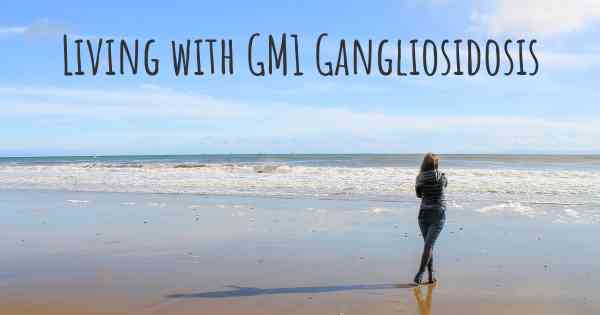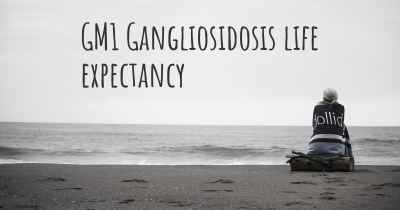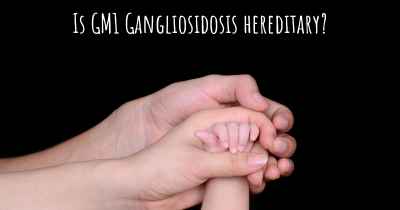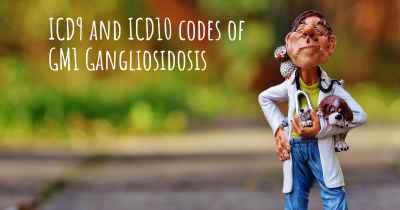Living with GM1 Gangliosidosis. How to live with GM1 Gangliosidosis?
Can you be happy living with GM1 Gangliosidosis? What do you have to do to be happy with GM1 Gangliosidosis? Living with GM1 Gangliosidosis can be difficult, but you have to fight to try to be happy. Have a look at things that other people have done to be happy with GM1 Gangliosidosis

Living with GM1 Gangliosidosis
GM1 Gangliosidosis is a rare genetic disorder that affects the nervous system. It is caused by a deficiency of an enzyme called beta-galactosidase, which leads to the accumulation of harmful substances in the body. Living with GM1 Gangliosidosis can present various challenges, but with proper care and support, individuals with this condition can lead fulfilling lives.
Medical Management
Managing GM1 Gangliosidosis requires a comprehensive medical approach. It is crucial to work closely with a team of healthcare professionals, including geneticists, neurologists, and other specialists. Regular check-ups and monitoring of symptoms are essential to track the progression of the disease.
Treatment options for GM1 Gangliosidosis are currently limited, and there is no cure. However, certain interventions can help manage symptoms and improve quality of life. These may include:
- Physical therapy: Physical therapy can help maintain muscle strength and flexibility, improve mobility, and manage spasticity or muscle stiffness.
- Occupational therapy: Occupational therapy focuses on developing skills for daily living activities, such as feeding, dressing, and communication.
- Speech therapy: Speech therapy can assist in improving communication skills and addressing swallowing difficulties that may arise.
- Medications: Some medications may be prescribed to manage specific symptoms, such as seizures or muscle spasms. However, their effectiveness may vary from person to person.
- Palliative care: As the disease progresses, palliative care can provide comfort and support to both the individual and their family, focusing on pain management and enhancing quality of life.
Supportive Care
Living with GM1 Gangliosidosis requires a strong support system. Here are some important aspects to consider:
- Family and friends: Surround yourself with a supportive network of family and friends who can provide emotional support and assistance with daily activities.
- Education and awareness: Educate yourself, your loved ones, and your community about GM1 Gangliosidosis. Raising awareness can help foster understanding and empathy.
- Support groups: Connect with other individuals and families affected by GM1 Gangliosidosis. Support groups can provide a sense of community, valuable insights, and a platform to share experiences.
- Respite care: Taking care of someone with GM1 Gangliosidosis can be physically and emotionally demanding. Utilize respite care services to give yourself a break and prevent burnout.
- Financial assistance: Explore available resources and financial assistance programs that can help with the costs associated with medical care, therapies, and equipment.
Emotional Well-being
Living with GM1 Gangliosidosis can be emotionally challenging for both the affected individual and their family. It is important to prioritize emotional well-being:
- Seek counseling: Consider individual or family counseling to address the emotional impact of the condition and develop coping strategies.
- Self-care: Take time for self-care activities that promote relaxation and reduce stress. This may include hobbies, exercise, meditation, or engaging in activities that bring joy.
- Stay connected: Maintain social connections and engage in activities that foster a sense of belonging and happiness.
- Acceptance and resilience: Embrace the challenges and focus on building resilience. Celebrate small victories and find strength in the journey.
Planning for the Future
GM1 Gangliosidosis is a progressive disorder, and it is important to plan for the future:
- Advance care planning: Discuss and document your wishes regarding medical interventions, end-of-life care, and organ donation, if applicable.
- Estate planning: Seek legal advice to ensure financial matters, wills, and guardianship arrangements are in order.
- Research and clinical trials: Stay informed about ongoing research and clinical trials related to GM1 Gangliosidosis. Participation in clinical trials may provide access to potential new treatments.
Living with GM1 Gangliosidosis can be challenging, but with a comprehensive medical approach, a strong support system, and a focus on emotional well-being, individuals affected by this condition can lead meaningful lives. It is important to remember that each person's journey is unique, and finding what works best for you or your loved one is key to living with GM1 Gangliosidosis.








